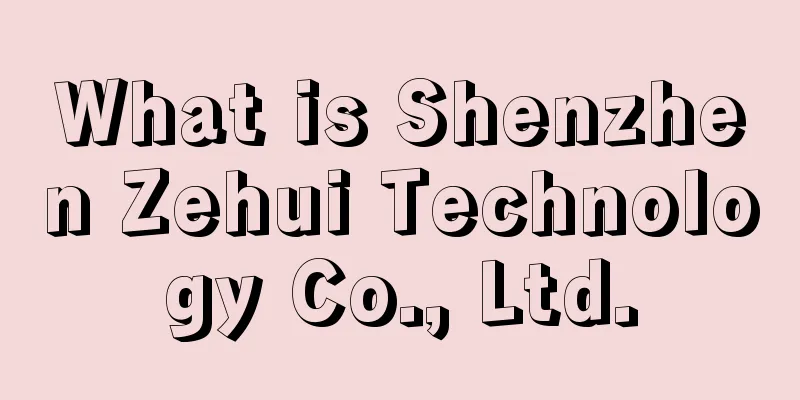What is Qi? Qi Review, Features

|
Qi is a "wireless charging" standard launched by the Wireless Power Consortium, the world's first standardization organization to promote wireless charging technology. It has two major characteristics: convenience and versatility.
About Qi First, products of different brands, as long as they have a Qi logo, can be charged with a Qi wireless charger. Second, it overcomes the technical bottleneck of "universality" of wireless charging. In the near future, mobile phones, cameras, computers and other products can be charged with Qi wireless chargers, making large-scale applications of wireless charging possible. The "Qi" icon is the pinyin of "气" in Chinese (Qi), which means "炁" (an invisible energy) in Asian philosophy. The Wireless Power Consortium was established on December 17, 2008. It is a cooperative organization composed of multiple independent companies. It aims to create and promote the market's widespread adoption of the international wireless charging standard Qi that is compatible with all rechargeable electronic devices. On the morning of August 31, 2010, the International Wireless Power Consortium (WPC) released the Qi wireless charging international standard at the Diaoyutai State Guesthouse in Beijing, introducing the standard into China.
Qi System Overview Qi transfers power based on the principle of electromagnetic induction. The Qi wireless charging system consists of a base station and a mobile device. The base station contains one or more transmitters, which will provide energy for reception. The mobile device contains a receiver to provide power to the load (such as a battery), and the receiver will also provide information to the transmitter. The transmitter has an energy conversion unit that converts the power into a wireless energy signal, and the energy collection unit in the receiver converts the wireless energy signal into power. The receiver will deliver power to the load as needed, and the transmitter adapts the energy transfer according to the needs of the receiver.
Qi Protocol Status WPC has introduced the Qi certification rules, which stipulate product technical specifications, test specifications, as well as certification processes and the use of certification marks. Qi certification is currently mature and popularized for close-range electromagnetic induction low-power devices. In 2014, the WPC Wireless Charging Alliance released the 1.2 version of the Qi wireless charging standard, and has been iteratively updated with sub-versions in the following years. In 2018, WPC released the latest Qi standard on its official website, with version number v1.2.4. This protocol was enforced on March 8, 2018, which means that wireless charging products certified after March 8, 2018 will no longer be applicable to Qi v1.2.3, but will be certified according to the Qi v1.2.4 standard.
Qi Application Qi can be widely used in handheld low-power devices such as mobile phones, MP3s, and cameras. Many electronic products have adopted Qi wireless charging technology, and representative products include Nokia Lumia 920 and Nokia Lumia 820 (to achieve Lumia 820 wireless charging, you need to add Lumia 820 wireless). There are also many companies that have become members of the Qi standard, including Haier, Philips, Nokia, etc.
Qi Certification Process 1. Become a WPC member; 2. Sign the Logo License Agreement; 3. The applicant initiates the certification registration process and uploads the application materials; 4. WPC Logo authorized administrator reviews the application materials; 5. WPC authorizes ATL to conduct conformity testing; 6. Conduct interoperability testing; 7. The applicant shall revise the product information; 8. Final review by WPC Logo authorized administrator.
Qi Certification Fees It is necessary to know whether the annual turnover is less than 10 million US dollars; the type of certification membership; whether it is already a WPC member; the type of certified products; the number of certified product models; and whether it is a similarity registered product.
Development History -On December 17, 2008, mainstream wireless charging technology solution providers such as IDT, Qualcomm, Texas Instruments, and terminal product manufacturers and brand owners such as Samsung and Philips jointly initiated the establishment of the Wireless Power Consortium (WPC). These initiating companies also became the main fixed members of WPC. -In August 2010, the Qi low power specification was released. -On August 31, 2010, WPC released the Qi wireless charging international standard at the Diaoyutai State Guesthouse in Beijing, introducing the standard into China. -In 2011, the first smartphone using Qi wireless technology was announced. -To date, more than 500 companies have supported QI, including VLG, Atmel, Callpod, case-mate, Compal, Continental Automotive, ConvenientPower, Chungtek, Duracell, Eltek Magnetics, Energizer, Eco, Fulton Innovation, Hanrim Postech, Hi-P, Hosiden, iGo, Jeckson, Leggett & Platt, LG Electronics, Li-Ming Technology, Lexing Cable, National Semiconductor, Nokia, Metrans, BASECOM, Olympus, Philips, Powerkiss, Primax Electronics, Rohm Semiconductor Group, RRC power solutions GmbH, Samsung Electronics, Sanyo, Sanfi, SixEye Interactive Ltd., Sony Ericsson Mobile Communications, ST-Ericsson, Texas Instruments, Toko Corporation, Verizon Wireless, Wisepower and Xentris Wireless. |
<<: What is Giveaway? Giveaway Review, Features
>>: What is ProdSG? ProdSG Review, Features
Recommend
It reached number one in its category within 4 days of being put on the shelves. The best-selling product with sales of 20,000 units turned out to be a “pig-killing scheme”?
During Halloween, cross-border sellers generally ...
What is East Dane? East Dane Review, Features
East Dane is a sister website of Shopbop.com and ...
The scale will reach 200 billion US dollars! Indian online fashion will become an important growth driver for Amazon
Although the conflict between e-commerce giants s...
Net profit exceeded 100 million yuan, another big seller on Amazon and independent sites!
As the domestic e-commerce market becomes increas...
With cross-border sales soaring, Giant Star Technology expects net profit of 726 million in the first half of the year!
As a company specializing in the development, pro...
What is Merchize? Merchize Review, Features
Merchize hopes to help businesses succeed on any e...
What is Light brand? Light brand Review, Features
Light brand provides "slimming customized&quo...
New SMS scam! Amazon user information leaked
Amazon users have recently been warned about a ne...
The US second-hand market will reach 69.2 billion! Christmas gifts become popular
According to Mercari's latest report, US cons...
Shopee to launch short video app to rival TikTok
On September 11, it was reported that Shopee will...
Amazon is the most visited e-commerce website in Spain
Recently, the 2021 Spanish e-commerce survey repo...
Etsy's stock price soars 300%, and its CEO believes that e-commerce will become more powerful
Etsy was a big winner during the Covid pandemic, ...
Lege is popular again! Spending 60 million to provide benefits for employees
In the past two years, the cross-border e-commerc...
What is Wholesale Central? Wholesale Central Review, Features
Wholesale Central is the largest online wholesale...
The actual controller cashed out 400 million yuan, Xiamen Dama is going to do big things
After the actual controller repeatedly reduced hi...









